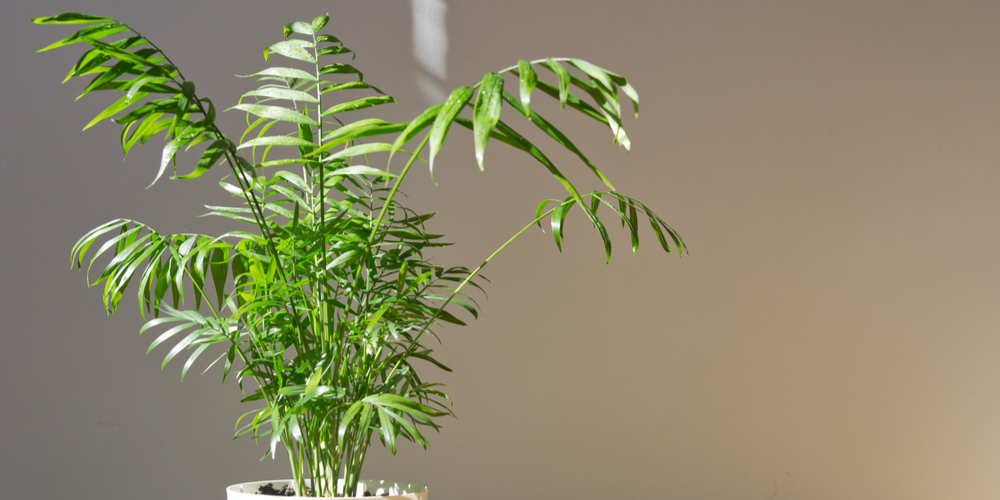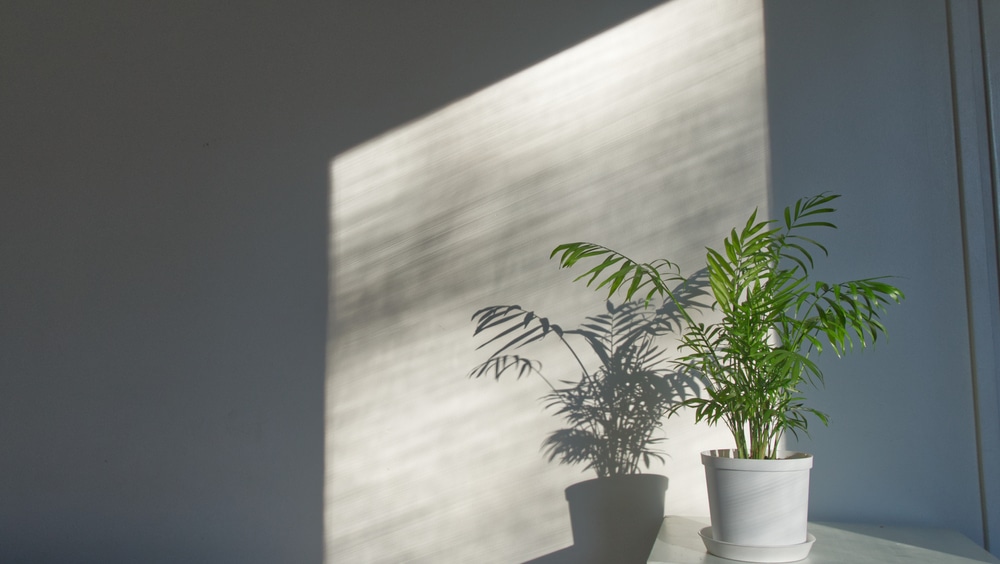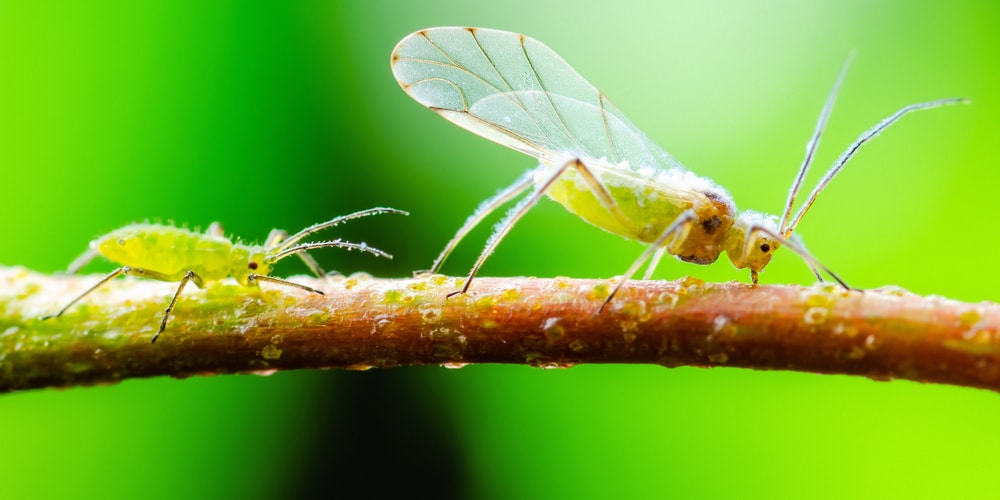The Parlor Palm plant stands gracefully, adding timeless elegance to most indoor spaces. Its fronds and slender leaves whisper in the breeze, beckoning you to come closer and enjoy its beauty. Since the Victorian era, this houseplant was all the rage. Today, it remains a popular choice thanks to its tough nature and elegant good looks.
Unfortunately, even hardy houseplants like this one are frustratingly susceptible to brown tips. While the problem is usually cosmetic, it can cause the plant distress and even kill it if left untreated. So, what causes brown tips on a parlor palm, and how can you treat them?
Parlor Palm Brown Tips: Causes and What to Do and How to Resolve the Issue
The beauty of parlor palm plants lies in their long, slender leaves. But those very leaves can also lead to problems as much as they help create a stunning display. Browning tips on a parlor palm are usually caused by improper watering practices, improper lighting conditions, temperature stress, overfertilization, or pests, among many others.
Is this something to worry about? While the tips may look bad, and the plant may be in distress, brown tips on a parlor palm usually aren’t deadly. Its foliage will usually recover as soon as you take the proper steps to correct the problem.
If you’re among individuals wondering how their parlor palm got its brown tips, it could be due to any of the reasons below:
Improper Watering Practices
One of the most common reasons for brown tips on a parlor palm is improper watering practices. These plants are native to tropical regions and prefer humid conditions. However, they don’t like to stay too wet or too dry, so it’s important to find a happy medium when watering your plant.
To help with proper drainage, using a light yet well-draining soil mix is essential. This helps ensure that the soil’s aeration and moisture levels are where they should be even after a deep and thorough watering. Most of the time, store-bought potting mixes already contain the necessary ingredients and would work just fine.
If you’re having issues with drainage, you amend the soil to aid in aeration, such as pumice, perlite, or coarse sand.
Your choice of pot also plays an important role in helping keep your plant’s moisture levels in check. A clay pot is a good option as it prevents the soil from getting soggy while allowing it to breathe.
Improper Lighting Conditions
The proper lighting condition is equally important as watering when taking care of your parlor palm. These plants prefer bright, indirect light and prefer to be on the lower end of the light spectrum.
Leaving your plant in an area that’s too shady will cause its leaves to turn yellow and brown. On the other hand, putting it under direct sunlight will scorch its leaves, causing them to turn brown and brittle.
Since this plant is slow-growing, keeping them in dim lighting conditions may result in slower growth. This might be ideal for some growers, especially if you want to keep your plant small.
But if you want your parlor palm to grow and thrive, make sure to give it the right amount of light it needs.
Overfertilization
Fertilizer burn is real, and it can cause real damage to your plant when done in excess. This is one of the reasons why it’s important to only fertilize when necessary and to always follow the manufacturer’s instructions to a tee.
Parlor palms are slow-growing plants, so they don’t need a lot of fertilizer, to begin with. It’s also recommended to dilute the fertilizer to half the recommended amount, with higher nitrogen levels in the spring and summer and lower nitrogen levels during the fall and winter.
Temperature Stress
Because they’re native to tropical regions, parlor palms don’t do well in cold temperatures. Cold drafts from open doors or windows can cause brown tips on your plant’s leaves. This plant thrives and has more vibrant foliage when in ideal temperatures, between 70 to 80 degrees Fahrenheit.
Repotting Issues and Stress
There are times when brown tips on a parlor palm are caused by repotting stress. This usually happens when the plant is moved to a new pot that’s too large for its current size.
When this happens, the roots are unable to take in all the nutrients and moisture it needs, resulting in the browning of the leaves’ tips.
The solution here is to simply move your plant to a pot that’s more proportionate to its size, water it thoroughly before repotting, and be extra careful not to damage the roots in the process.
Problems with Water Quality
While uncommon, if your tap water is heavily chlorinated or mineralized, the extra chemicals and minerals would be shown on the plant’s leaves. If you’ve suddenly noticed that your parlor palm has brown tips on its leaves despite giving it the proper lighting, watering, and fertilizing needs, try using filtered water for watering. You may also try distilled or rainwater to see if this changes anything.
Pests and Diseases
Indoor plants are more susceptible to pests and diseases because they’re cut off from their natural environment. Some of the more common pests that could attack your parlor palm are spider mites, mealybugs, and scale insects.
As for diseases, brown tips on a parlor palm could also be caused by root rot or leaf spot. These are usually the result of overwatering or poor drainage.
The best way to deal with pests and diseases is to catch them early on and take preventive measures to avoid them altogether. For instance, soaking your plant’s leaves in a mixture of water and horticultural soap can help get rid of pests. Additionally, making sure your plant has good drainage can prevent root rot and leaf spot from occurring.
Should You Cut Brown Tips on Parlor Palm?
In some cases, you can cut the brown edges, making sure that you don’t get to the healthy, green part of the leaf. If the entire lead has already turned brown, you can cut it off at the base.
Doing this will help improve the plant’s appearance, but it won’t do anything to fix the underlying problem. If you continue to see brown tips on your parlor palm leaves, make sure to address the cause so that you can prevent further damage.
Parlor Palm Brown Tips: Final Thoughts
Although there are several reasons why brown tips might form on a parlor palm, most of them can be easily fixed with some TLC. By following the proper care instructions when growing an indoor palm tree, and being vigilant in your plant’s upkeep, you should be able to keep your parlor palm healthy and looking its best.


